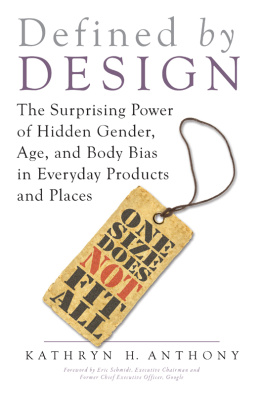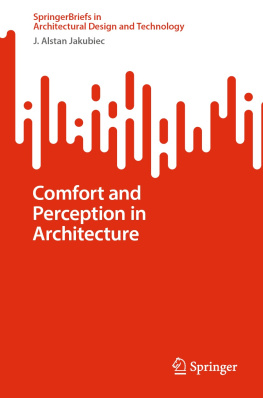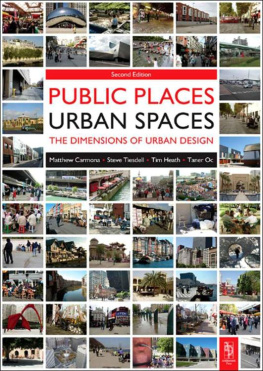Defined by Design took about a decade to write. So I have many, many people whom I must thank. It takes a village to write a book.
Special thanks to my longtime friend Eric Schmidt for taking time out of his fast-paced schedule to write the foreword to this book. Each and every day, through his leadership as executive chairman and former chief executive officer at Google, Eric and his colleagues are continuing to make the world a better place for all of us. Thanks too go to John Musnicki, who has been an outstanding host at Google Chicago to my graduate seminar for many years. Google's meticulous attention to design that meets the demands of a diverse worldwide clientele never ceases to amaze me.
Hundreds of people shaped this book by entrusting me with candid insights about their experiences with everyday products, places, and spaces. Their stories ranged from comedies to tragedies, and everywhere in between. Each of their tales was amusing, entertaining, and enlightening in its own way, ultimately taking this book in directions I would never have thought of on my own. To all of these individuals who remain anonymous, I am enormously grateful.
Another round of thanks goes to journalists Lisa Anderson, Ceri Au, Laura Bliss, John Branch, Josie Delap, Levi Fishman, Maria La Ganga, Mike Pesca, Rachel Martin, and John Sutter for including my comments in earlier print and broadcast interviews at the Atlantic, CNN, the Economist, the Guardian, National Public Radio, the New York Times, Time, and elsewhere, alerting audiences to the pressing need for gender equity in design.
My deepest thanks to all those who made my dream come true to see this book published. At Prometheus Books, Vice President and Editor in Chief Steven L. Mitchell recognized this book's potential, and Editorial Assistant Hanna Etu skillfully saw this project through to fruition. Will DeRooy provided a thoughtful copyedit. Working with the staff at Prometheus has been a pleasure every step of the way.
Olga Kontzias Psillis believed in my book from the get-go and after a circuitous path eventually pointed me in the direction of Maryann Karinch. Had I not intercepted Olga just days before she retired, chances are I would never have discovered Maryann. Maryann Karinch believed in this project from the first time she saw it and ushered me through several iterations of my book proposal. Without her, Defined by Design may never have seen the light of day. For both of us, patience, persistence, and perseverance were the name of the gameuntil we finally found the perfect match.
Enormous thanks to Jean McDonald, my colleague who teaches journalism at the University of Illinois at UrbanaChampaign, and who proved to be a spectacular editor. Her timely insights at critical stages improved this book in countless ways, including working with me to shrink it almost in half. I'm indebted to Rich Martin, former head of the Department of Journalism, who steered me in Jean's direction.
Over the past decade, many colleagues invited me to speak about my ongoing research for Defined by Design in places both near and far: Ankara, Bangkok, Champaign-Urbana, Chicago, Chongqing, Moscow, Nicosia, Philadelphia, Salzburg, Seoul, Shanghai, Venice, and even a congressional testimony in Washington, DC.
A warm thank you to all my hosts and colleagues: William Cope, Chunlan Du, Meltem . Grel, Sylvia Hahn, Haesong Je, Mary Kalantzis, Heping Li, Zhi Liu, Feng Lu, Wei Lu, Kathryn Marshak, Anne Marshall, Stan Nadel, Jay Peters, Pani Pyla, Sun-Young Rieh, Joanne Royce, Jack Sim, former US representative Edolphus Towns, Alexander Wolf, Leiqing Xu, and Hua Yue, as well as to my longtime friends and colleagues at Chicago Women in Architecture. With each speaking engagement came new encounters with new friends who inspired me to delve into this topic even more.
Historian Emeritus of the United States Senate Donald Ritchie generously provided me with a memorable behind-the-scenes tour of the US Capitol, where he pointed out fascinating gender issues in design.
For their pioneering advocacy work to usher in a new era of gender-friendly public restroom designs, I am grateful to Robert Brubaker, Tom Keating, Mary Coakley Munk, Steven Soifer, and especially to Jack Sim, an international leader on this issue whose efforts led to the official recognition of November 19 as World Toilet Day by the United Nations.
Former chancellor Nancy Cantor and former provost Linda Katehi invited me to serve in key leadership positions at the University of Illinois at UrbanaChampaign to advance gender equity on campus, providing special opportunities and modest financial support to put into practice gender issues in design. I was privileged to work with colleagues Mark Barcus, Deanie Brown, Anita Kaiser, Timothy McCarthy, Kelly Sullivan Milburn, Gale Summerfield, Barbara Wilson, and Brad Ward, who helped bring our design ideas to life.
David Chasco and Peter Mortensen provided a supportive working environment in the Illinois School of Architecture that enabled me to teach my graduate seminars on gender and race in contemporary architecture and social and behavioral factors in design, allowing me to work together with scores of talented students and plant the seeds of Defined by Design.
Many former students and colleagues provided valuable research assistance with various stages of this project. I am most grateful to Gloria Colom, Ron Corniels, Nai-Wen Kuo, Natalya Falk Lee, Heidi Hagen Lightner, Wambaa Mathu, Terrence McMahon, Christina Mooney, Joanne Muniz, Sudipta Rakshit, Neha Rane, Aparna Saligrama, Muhammad Taimur Sarwar, Sana Hafeez Taimur, Shannon Tucker, Chia-Hui Wang, and Crystal Whiters. Special thanks go to Meghan Dufresne, who worked with me for a number of years and became one of my favorite coauthors.
Two of my former students, Andrea Stafford Cecelia and Jon Cecelia, graciously provided photographs of their young daughters, Annalise and Madeleine, as they are routinely disadvantaged by design, as did my niece, Anastasia Lewis, and her infant son, Ethan.
Beth Tauke, Korydon Smith, and Charles Davis invited me to write a book chapter about gender issues in podium design for their textbook, Diversity and Design, stirring me to reflect on my experiences.
Thanks as well to Susan Grossinger, Greg Moore, Joi Sumpton, Paul Sumpton, and Nicholas Watkins, who introduced me to products that do an exceptionally good job designing for diverse genders, ages, and body sizes.
Good friends, neighbors, and nearby colleagues provided fascinating discussions, great leads, refreshing walks, scenic drives, and nourishing meals. In Champaign-Urbana and Chicago, these included Charlotte Arnstein, Sylvia Arnstein, Walter Arnstein, Leanne Rodgers Barnhart, Sara Bartumeus, William Cope, Beth Finke, Victor Font, John Garner, Wendy Greenhouse, Spring Harrison, Sharon Irish, Mary Kalantzis, Darlene Kloeppel, James Kloeppel, Joy Malnar, Melissa Mitchell, Lubitsa Nenadov, Bea Nettles, Carole Rebeiz, Tino Rebeiz, Nate Schmitz, Gisela Sin, Amita Sinha, Beth Stafford-Vaughan, Lionel Suntop, Rachel Suntop, Michael Trenary, Frank Vodvarka, Trish Wilkinson, and Kostas Yfantis. While based in La Jolla, these included Eve Allen, Jerry Allen, Greg Lambron, Barry Levich, Mike Maynard, William McGill, Betsey Monsell, Craig Monsell, Erys Phillips, Gillian Pinsky, Paul Pinsky, Helga Stark, and Paul Stark.
Three lifelong academic mentors provided an intellectual grounding that inspired my career as an educator and an author: Clare Cooper Marcus, Galen Cranz, and Robert Sommer. The years I spent as a graduate student at the University of California at Berkeley's International House helped to spark my interest in diversity.










